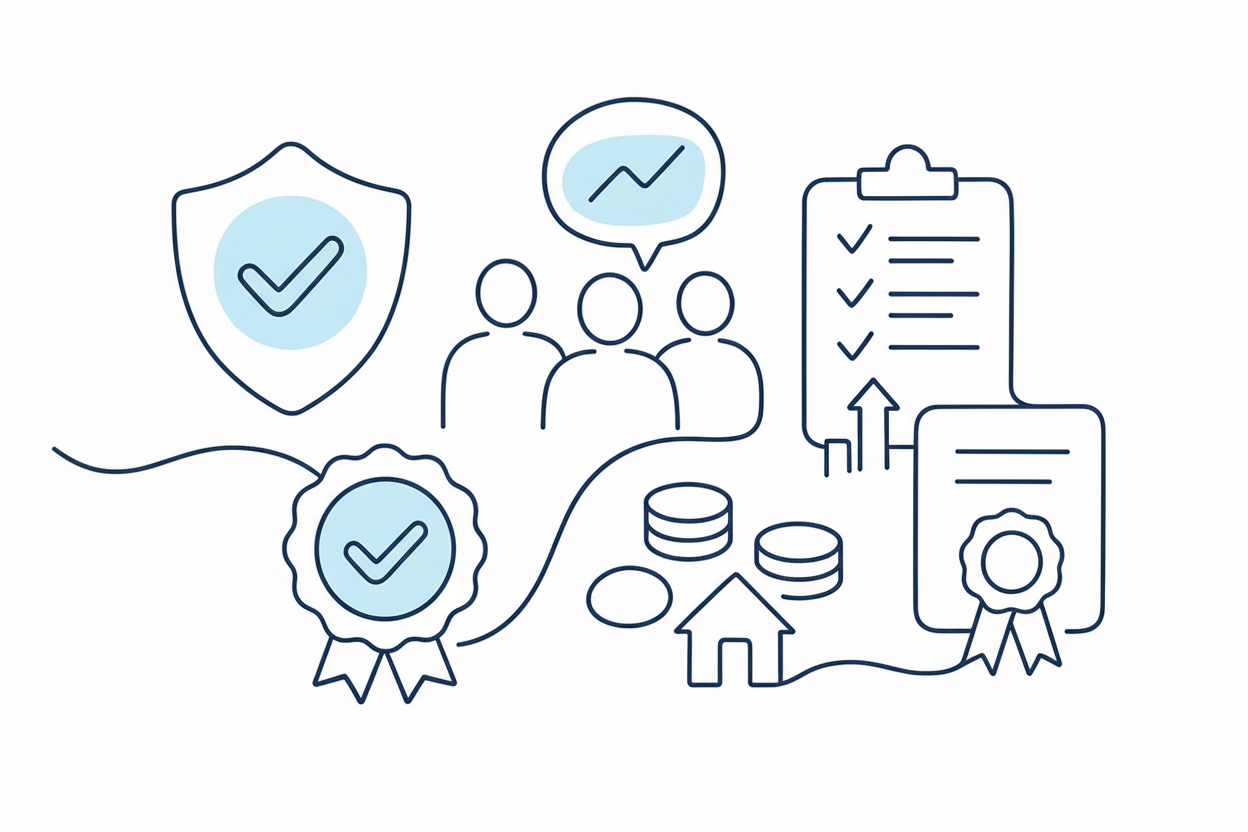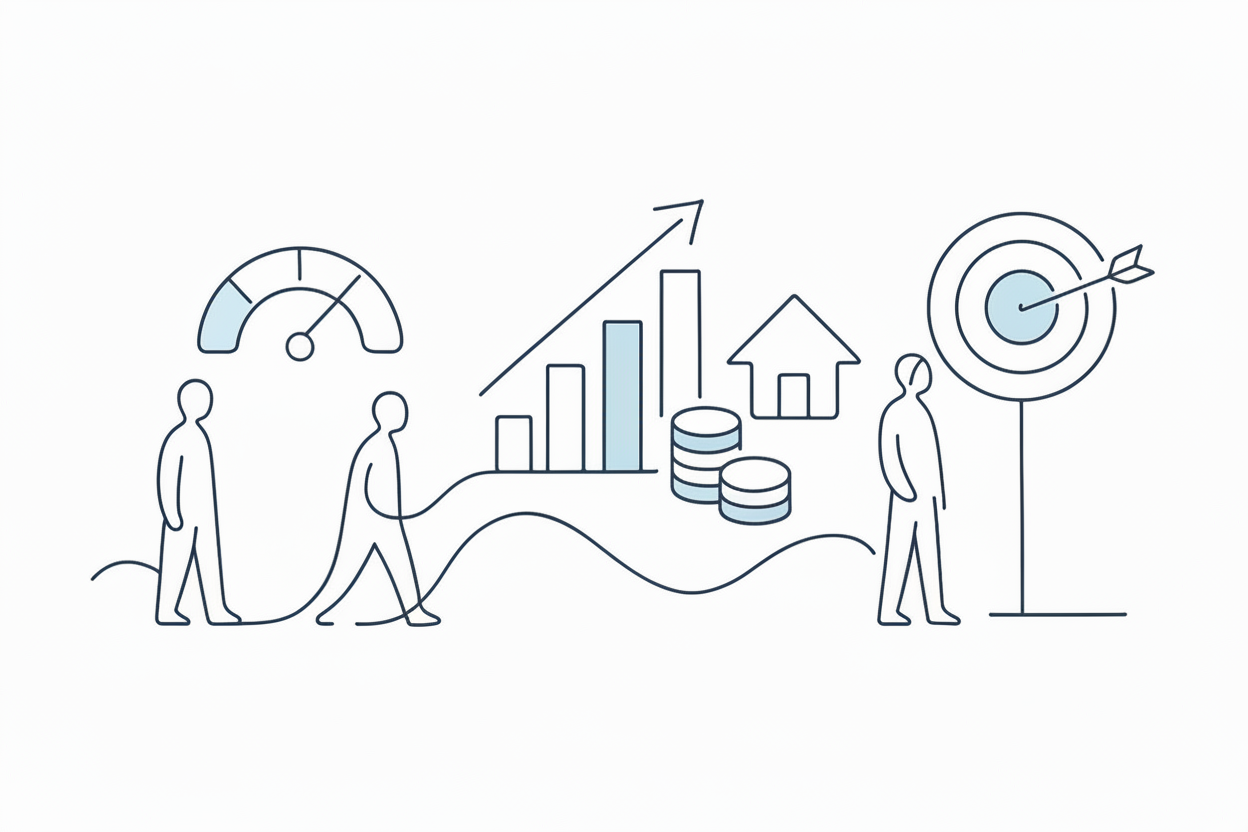Best Automated Trading Bots 2025

Discover the top automated trading bots of 2025. Compare features, pricing, and performance metrics to find the best trading bot for your investment strategy.
Automated trading bots have revolutionized how investors approach financial markets, offering sophisticated algorithms that can execute trades 24/7 without emotional interference. As we enter 2025, the landscape of trading automation has evolved significantly, with new platforms emerging and existing ones enhancing their capabilities.
The rise of retail trading automation has democratized access to institutional-level trading strategies, allowing individual investors to compete with professional traders. This comprehensive guide examines the top automated trading bots available in 2025, helping you navigate the complex world of algorithmic trading.
Understanding Trading Bot Technology
What Are Automated Trading Bots
Automated trading bots are software programs that execute trades based on predetermined algorithms and market conditions. These systems analyze market data, identify trading opportunities, and place orders without human intervention. The sophistication of these bots ranges from simple rule-based systems to complex machine learning algorithms.
Modern trading bots can process vast amounts of market data in milliseconds, identifying patterns and opportunities that human traders might miss. They operate continuously, monitoring multiple markets and assets simultaneously, ensuring no trading opportunity is overlooked due to human limitations.
Types of Trading Strategies
Trading bots employ various strategies depending on market conditions and user preferences. Trend following bots identify and capitalize on sustained price movements, while mean reversion strategies profit from price corrections. Arbitrage bots exploit price differences across exchanges, and scalping algorithms make numerous small trades to accumulate profits.
High-frequency trading bots execute thousands of trades per second, competing on speed and execution efficiency. Meanwhile, swing trading bots hold positions for days or weeks, focusing on larger price movements. Each strategy requires different technological capabilities and risk management approaches.
Leading Trading Bot Platforms
3Commas
3Commas stands out as one of the most user-friendly platforms for automated trading in 2025. The platform offers both simple and advanced trading bots, making it accessible to beginners while providing sophisticated tools for experienced traders. Their dollar-cost averaging bots are particularly popular among long-term investors.
The platform supports over 20 exchanges and provides extensive backtesting capabilities. Users can create custom strategies or choose from hundreds of pre-built trading bots. The social trading feature allows users to copy successful traders' strategies, democratizing access to profitable trading approaches.
3Commas pricing ranges from $29 to $99 per month, with higher tiers offering more simultaneous bots and advanced features. The platform's strength lies in its comprehensive educational resources and active community support.
Cryptohopper
Cryptohopper has established itself as a leader in cryptocurrency trading automation. The platform offers cloud-based trading bots that operate continuously, even when users are offline. Their marketplace allows users to purchase proven trading strategies from successful algorithm developers.
The platform's technical analysis capabilities are impressive, supporting over 130 technical indicators. Users can create complex trading strategies using multiple conditions and triggers. Cryptohopper's paper trading feature enables risk-free strategy testing before committing real capital.
Pricing starts at $19 per month for basic features, scaling up to $99 for professional accounts with unlimited positions and advanced analytics. The platform's strength is its extensive customization options and robust backtesting environment.
TradeSanta
TradeSanta focuses on simplicity and reliability, offering easy-to-configure trading bots for both cryptocurrency and traditional markets. The platform's grid trading bots are particularly effective in sideways markets, automatically buying low and selling high within defined price ranges.
The platform supports major exchanges including Binance, Coinbase Pro, and Bitfinex. TradeSanta's strength lies in its straightforward interface and reliable execution, making it ideal for users who prefer set-and-forget trading strategies.
Monthly subscription plans range from $15 to $50, with higher tiers supporting more trading pairs and concurrent bots. The platform offers transparent performance tracking and detailed analytics for strategy optimization.
Gunbot
Gunbot caters to more technical users, offering extensive customization options and advanced trading strategies. The platform supports over 100 exchanges and provides sophisticated backtesting capabilities. Users can create highly complex trading algorithms using the platform's comprehensive strategy builder.
The platform's strength lies in its flexibility and advanced features, including support for custom indicators and complex trading logic. Gunbot offers both subscription and lifetime license options, appealing to serious algorithmic traders who want full control over their trading systems.
Pricing ranges from $99 to $999 for lifetime licenses, making it cost-effective for long-term users. The platform requires more technical knowledge but offers unparalleled customization capabilities.
Traditional Market Trading Bots
MetaTrader Expert Advisors
MetaTrader platforms continue to dominate traditional forex and CFD trading automation. Expert Advisors (EAs) can be purchased or developed custom, offering sophisticated trading strategies for traditional financial markets. The platform's MQL programming language allows for highly customized trading algorithms.
The ecosystem includes thousands of free and paid Expert Advisors, covering various trading strategies and market conditions. Professional developers offer custom EA development services, creating tailored solutions for specific trading requirements.
TradeStation Automation
TradeStation provides institutional-grade trading automation for stocks, options, and futures markets. Their EasyLanguage programming environment enables users to create sophisticated trading strategies with extensive backtesting capabilities.
The platform's strength lies in its comprehensive market data, advanced charting capabilities, and robust execution infrastructure. TradeStation is particularly popular among professional traders and institutional clients requiring high-reliability trading automation.
Integration Capabilities and Broker Support
TradersPost Integration Advantages
TradersPost has emerged as a powerful bridge between trading signals and broker execution. The platform enables seamless integration between TradingView alerts and multiple brokers, allowing traders to automate their strategies across various accounts and asset classes.
The platform's strength lies in its ability to translate TradingView signals into executable trades across multiple brokers simultaneously. This capability eliminates the need for separate bot configurations for each broker, streamlining the automation process.
TradersPost supports major brokers including Interactive Brokers, TD Ameritrade, and numerous others, providing flexibility in broker selection. The platform's webhook integration ensures reliable signal transmission and execution, critical for time-sensitive trading strategies.
Multi-Exchange Connectivity
Modern trading bots must support multiple exchanges and brokers to provide maximum flexibility. The best platforms in 2025 offer extensive connectivity options, allowing users to diversify their trading across different venues and asset classes.
Cross-exchange arbitrage opportunities become accessible when bots can operate across multiple platforms simultaneously. This capability also provides redundancy, ensuring trading can continue even if one exchange experiences technical issues.
Performance Metrics and Evaluation
Key Performance Indicators
Evaluating trading bot performance requires understanding multiple metrics beyond simple returns. Sharpe ratio measures risk-adjusted returns, while maximum drawdown indicates the largest peak-to-trough decline. Win rate and average trade duration provide insights into strategy characteristics.
Consistency of returns is often more valuable than occasional large gains. The best trading bots demonstrate steady performance across various market conditions, adapting their strategies as market dynamics change.
Backtesting and Strategy Validation
Comprehensive backtesting is essential for evaluating trading bot performance. The best platforms provide extensive historical data and realistic simulation environments, including transaction costs and slippage modeling.
Out-of-sample testing validates strategy performance on unseen data, reducing the risk of overfitting. Walk-forward analysis ensures strategies remain profitable as market conditions evolve over time.
Security and Risk Management
Platform Security Features
Security remains paramount in automated trading, with the best platforms implementing multiple layers of protection. Two-factor authentication, API key encryption, and secure cloud infrastructure protect user accounts and trading capital.
Regular security audits and penetration testing ensure platforms remain protected against evolving threats. The best platforms maintain transparent security practices and provide detailed information about their protective measures.
Risk Management Tools
Effective risk management distinguishes successful trading bots from those that eventually fail. Position sizing algorithms, stop-loss mechanisms, and correlation monitoring help protect capital during adverse market conditions.
Maximum drawdown limits and daily loss restrictions prevent catastrophic losses during extreme market events. The best platforms provide granular risk control settings, allowing users to customize protection levels based on their risk tolerance.
Cost Analysis and ROI Considerations
Subscription Models and Pricing
Trading bot pricing varies significantly across platforms, with models ranging from monthly subscriptions to lifetime licenses. Understanding the total cost of ownership includes subscription fees, exchange commissions, and potential slippage costs.
Higher-priced platforms often provide advanced features and superior execution capabilities that can justify increased costs through improved performance. The key is matching platform capabilities with individual trading requirements and capital levels.
Break-Even Analysis
Calculating break-even points helps determine whether trading bot costs are justified by performance improvements. Factors include subscription fees, trading frequency, and average profit per trade.
Successful automation typically requires sufficient capital to cover costs while maintaining effective position sizing. Platforms with lower minimum capital requirements often appeal to retail traders beginning their automation journey.
Choosing the Right Trading Bot
Matching Bots to Trading Styles
Different trading styles require specific bot capabilities and features. Day traders need low-latency execution and high-frequency trading capabilities, while swing traders prioritize analytical tools and longer-term strategy optimization.
Risk tolerance also influences bot selection, with conservative investors preferring stable, lower-return strategies, while aggressive traders may accept higher volatility for potential increased returns.
Technical Requirements
Modern trading bots often require reliable internet connectivity and sufficient computing resources. Cloud-based solutions eliminate infrastructure concerns but may have higher ongoing costs compared to self-hosted alternatives.
Integration complexity varies significantly between platforms, with some requiring programming knowledge while others offer intuitive drag-and-drop strategy builders. User technical expertise should align with platform complexity levels.
Future Trends in Trading Automation
Artificial Intelligence Integration
Machine learning and artificial intelligence continue advancing trading bot capabilities. Neural networks can identify complex market patterns that traditional algorithms might miss, potentially improving strategy performance.
Natural language processing enables bots to incorporate news sentiment and social media analysis into trading decisions. These developments represent the cutting edge of trading automation technology in 2025.
Regulatory Developments
Regulatory frameworks continue evolving to address automated trading growth. Understanding compliance requirements ensures trading bots operate within legal boundaries across different jurisdictions.
Increased regulation may improve market stability and investor protection but could also impose additional requirements on trading bot platforms and users.
Getting Started with Trading Automation
Initial Setup and Configuration
Beginning with trading automation requires careful planning and gradual implementation. Starting with paper trading allows strategy testing without financial risk, building confidence before committing real capital.
Initial strategy selection should match individual risk tolerance and market knowledge. Simple strategies often prove more reliable than complex algorithms, particularly for new automated trading users.
Monitoring and Optimization
Successful trading automation requires ongoing monitoring and strategy refinement. Market conditions change over time, requiring strategy adjustments to maintain effectiveness.
Regular performance reviews help identify areas for improvement and ensure strategies continue meeting investment objectives. The best trading bot platforms provide comprehensive analytics tools for this purpose.
Conclusion
The automated trading landscape in 2025 offers unprecedented opportunities for individual investors to access sophisticated trading strategies. The platforms discussed in this guide represent the current leaders in trading automation, each offering unique strengths and capabilities.
Success with trading bots requires careful platform selection, thorough strategy testing, and ongoing monitoring. The democratization of trading automation has leveled the playing field between individual and institutional investors, providing powerful tools for portfolio management and profit generation.
Whether you're a beginner exploring automated trading or an experienced trader seeking advanced capabilities, the platforms available in 2025 offer solutions for every skill level and investment approach. The key is matching platform capabilities with individual requirements while maintaining realistic expectations about automated trading outcomes.




